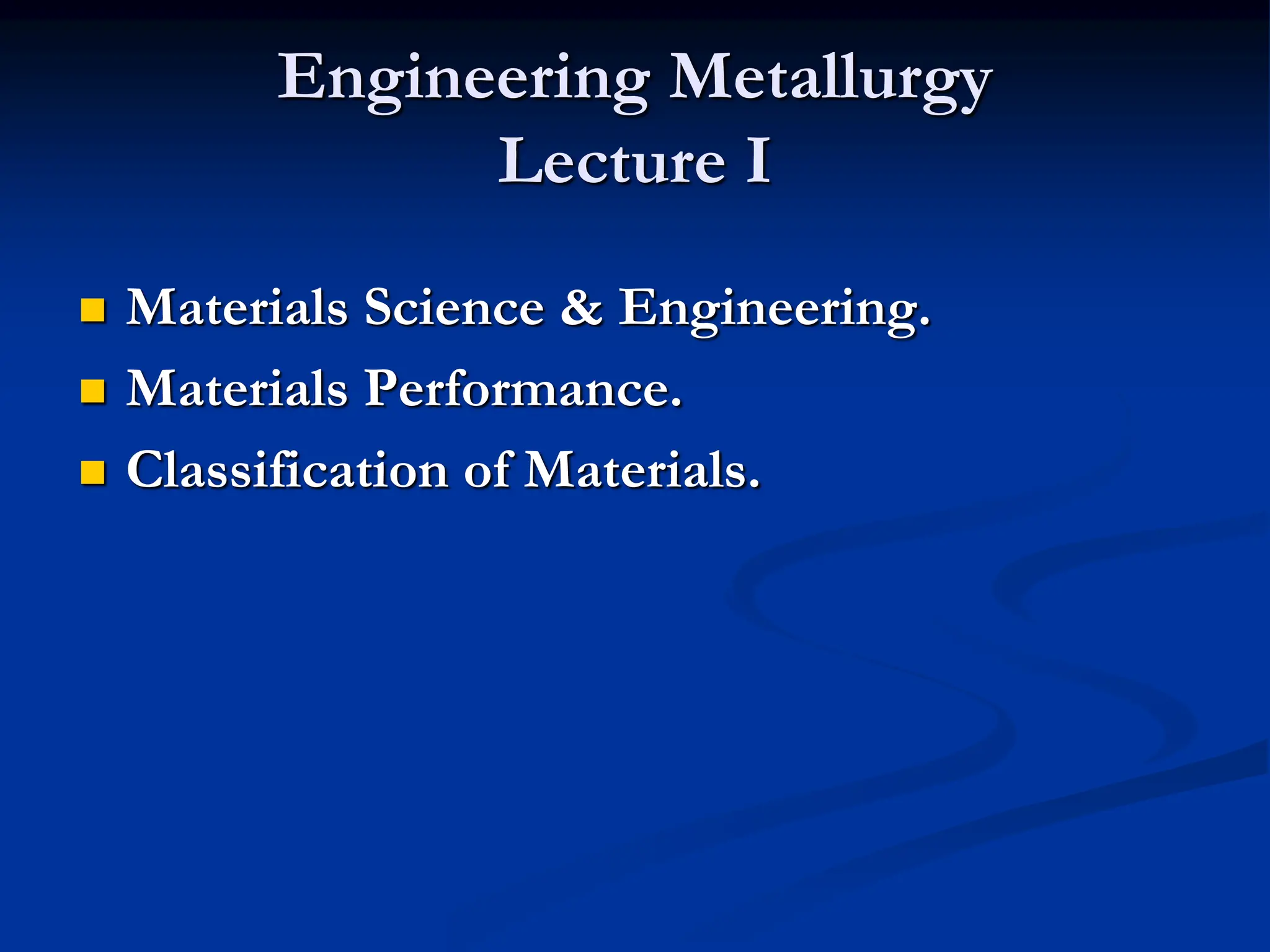The document covers the fundamentals of materials science and engineering, discussing the relationship between material structures and their properties, alongside classifications of materials such as metals, ceramics, polymers, and composites. It explores various bonding types, their characteristics, and how they affect materials' properties including mechanical strength, thermal resistance, and electrical conductivity. The lecture emphasizes the complexity of material selection, considering factors like performance, cost, and durability for different applications.

































